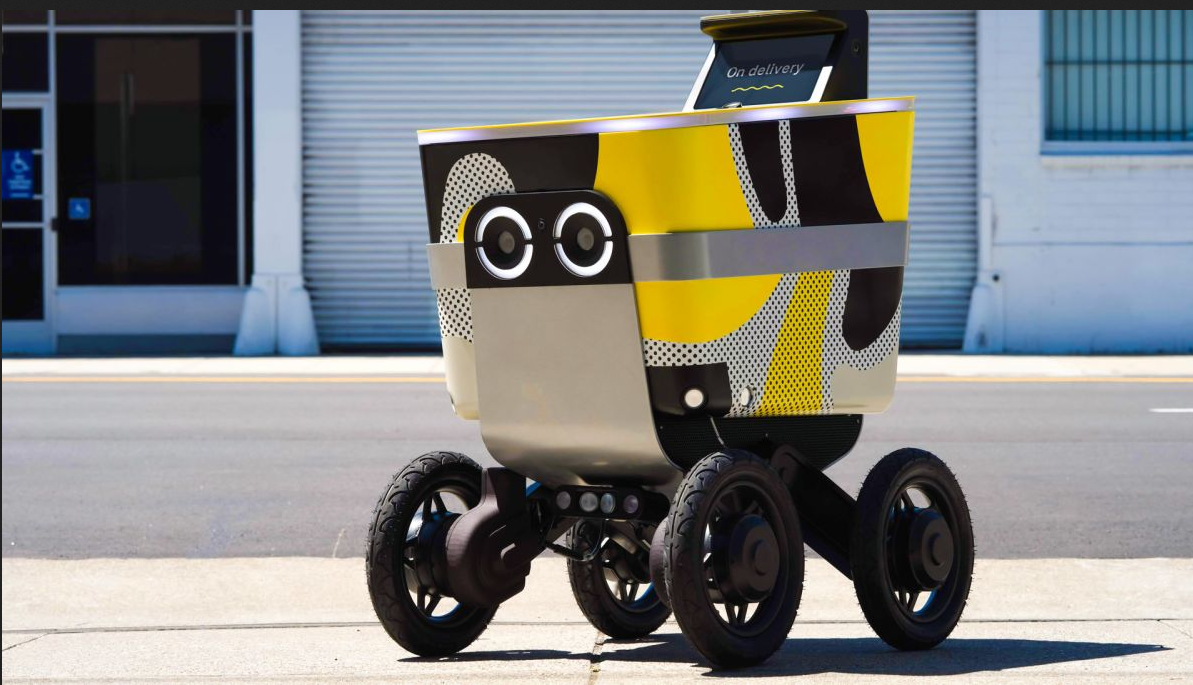Uber is the most recent firm to launch home delivery of meals with robots.
The company, which has long claimed that automation is key to its future profitability, announced that it would launch two test programs to deliver Uber Eats in greater Los Angeles this month. One test will use four-wheeled robots that roll on sidewalks for short trips as well as self-driving cars for longer distances.
Starting Monday, Uber Eats customers in West Hollywood will be able to get their meals delivered by a robot rather than a person. The Serve robot, which resembles a colorful cooler on wheels with a lid that flips open to reveal a delivery inside, has headlights that resemble eyes and resembles something out of a cartoon.
Hyundai will begin testing self-driving technology from the company Motional on public roads in Santa Monica, California. The partnership was originally announced in December 2018. Motional is one of the longest-tenured teams in autonomous driving, having introduced a limited robotaxi service in Singapore in 2016 and begun to test rides with Lyft in Las Vegas in 2018. Motional is owned by Hyundai and the automotive tech supplier Aptiv. It plans to launch a robotaxi service with Lyft in Las Vegas next year.
Hyundai is now delivering takeout via its new sedan. The hot food will be kept in a thermal container in the back seat, where customers retrieve it. A human test driver will be behind the wheel as a safety precaution. Serve Robotics, which operates Uber’s sidewalk robots, will rely on a remote human operator to supervise deliveries.
Uber’s robot deliveries will not make up a significant portion of its deliveries in the near future, according to Noah Zych, who leads autonomous mobility and delivery at the company.
Uber’s chief product officer said that robots could make deliveries more affordable in the long term. Trips that may be unappealing to pay for delivery today, like picking up one’s dry cleaning, could become affordable with autonomous deliveries, he said. (In 2020, Uber sold its team of self-driving vehicles internally—which had been developing autonomous vehicles—to the self-driving company Aurora. Today, Uber remains an Aurora investor and the companies are working together on robotaxis.)
The first chapter of autonomous vehicles delivering food on Uber has been written, and it’s clear the company sees a promising future for the technology. “We see the potential in the future but have to start where we are today,” said Zych. Food delivery has become critical to Uber’s bottom line in recent years; its delivery revenue of $2.5 billion in the first three months of the year matched its revenue from its traditional rides business.
But Uber’s adjusted earnings before interest, taxes, depreciation and amortization (EBITDA) for food delivery, a profitability metric, is worse than its ridehailing business — which suggests that the company could be able to improve its profitability by using robots. Businesses generally like to automate tasks because it can reduce labor costs and improve profit margins.
Companies have long talked about using robots to deliver things to people but pilot programs so far have been small and typical of the autonomous delivery world that’s long had more sizzle than substance due to technical and regulatory challenges.
Jeff Bezos prediction
Amazon founder Jeff Bezos predicted in a 2013 segment of 60 Minutes that drone delivery would be available in four or five years. Despite Prime Air’s first delivery in 2016, the company has yet to launch a regular delivery service. Amazon says it is still aiming to one day make 30-minute drone deliveries to customers.
Amazon has been testing sidewalk robots in public since 2019 to deliver packages. It says it has delivered tens of thousands of packages in Snohomish County, Washington; Irvine, California; Atlanta, Georgia and Franklin, Tennessee. They are a tiny fraction of Amazon’s total deliveries, which amount to billions of packages a year.
Starship, a sidewalk robot company, says it has 10,000 daily deliveries in 40 locations worldwide, including 25 US college campuses. The average cost of each of those deliveries is $1.99, Janel Steinberg, the company’s spokesperson told CNN Business. Starship claims to be profitable in some of its locations, but didn’t say where. CNN Business has not audited its financials to confirm the claim.
The dining services at George Mason University, one of Starship Technologies’ locations since 2019, say that about 60 robots deliver between 700 to 1,000 deliveries per day from locations like Panera Bread, Starbucks and Blaze Pizza. According to a spokesperson for the university, Sofya Vetrova, the deliveries cost $2.49 plus a 10% service fee. Feedback from students at this location has been 95% positive, Vetrova said.
Google’s parent company
Google’s parent company Alphabet has been one of the most active companies in the drone delivery industry. Wing, a drone delivery company owned by Alphabet, says it made 53,000 commercial deliveries in the first three months of this year, a 355% increase from the same period in 2021. Wing operates in Logan and Canberra Australia; Christiansburg, Virginia; Dallas-Fort Worth, Texas and Helsinki, Finland.
Wing declined to say whether it is profitable. Other Bets, a part of Alphabet’s financial statements that includes Wing, lost $1.16 billion in the first three months of this year.
Wing, a delivery drone company, told CNN Business that regulations are holding back its technology in the United States, and says it’s had more scale and impact in Australia because of the different regulatory environment. The company declined to say when it expects robot deliveries to be mainstream in the United States.
“It’s the trillion-dollar question,” Dave Ferguson, co-founder of the autonomous robot startup Nuro, told CNBC. Nuro is testing delivery with Kroger and 7-Eleven.








